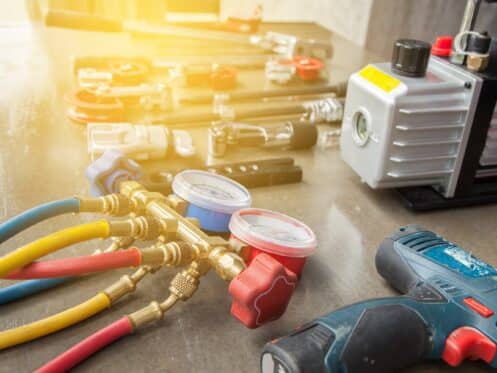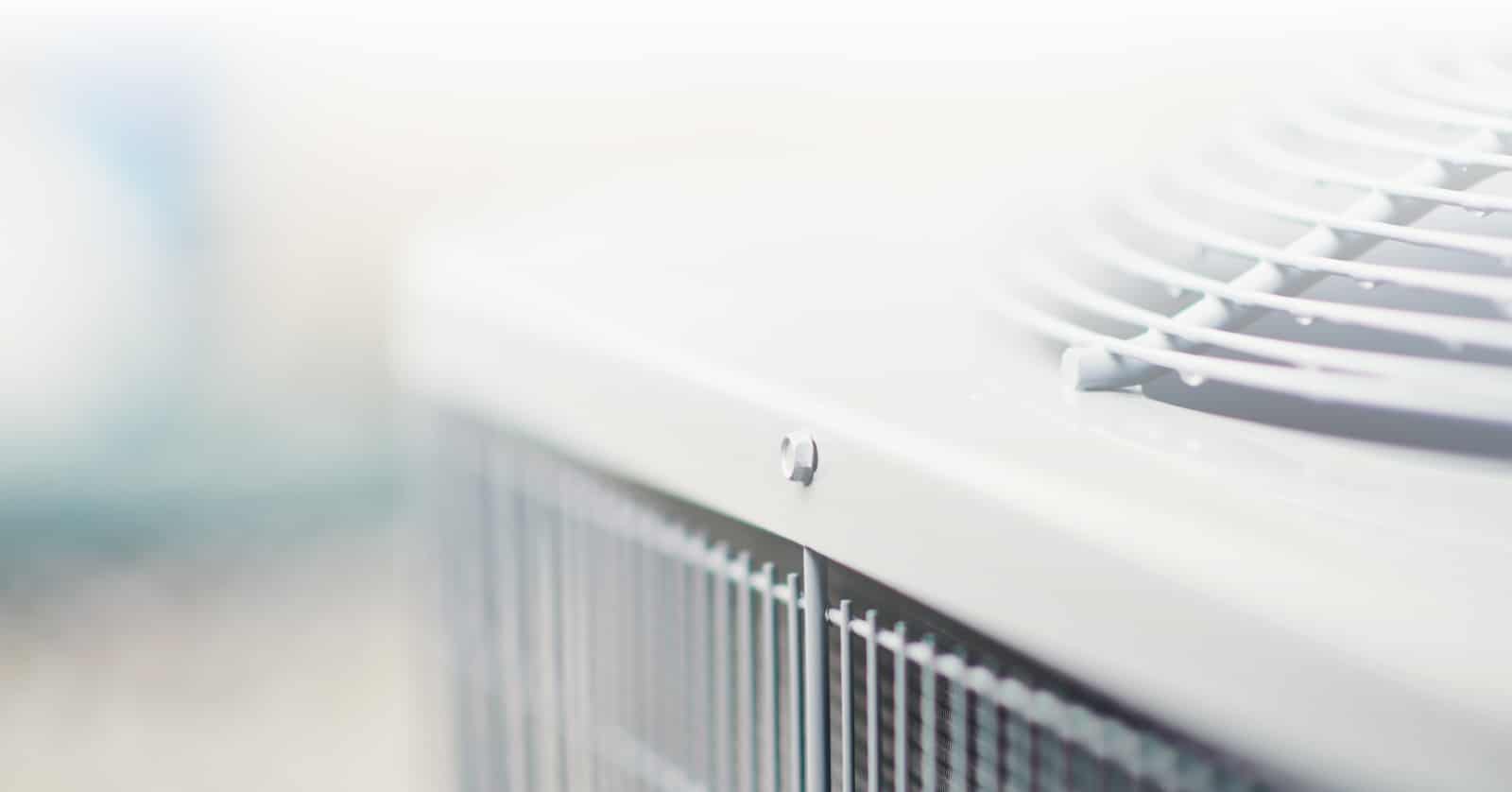Air conditioner systems can stop working properly for a variety of reasons. Some issues can lead to the system not working as effectively and cooling more slowly, which then results in the system running almost constantly. There are also various issues that can prevent the system from turning on at all or only ever running for a short period before shutting it back off. This means that troubleshooting the specific cause of an AC problem can be quite tricky and will usually need to be done by a certified HVAC technician. Here is an overview of some of the steps involved when trying to troubleshoot many AC issues.
Replace the Air Filter
If your air conditioning seems to run much more than usual or you notice very little cool air blowing out of your vents, the first thing to do is replace the air filter. A dirty air filter can drastically reduce the effectiveness of the system and the rate of cooling. If the filter is clogged, very little warm air will be drawn into the system which means very little cool air will come out. A clogged air filter can also lead to the evaporator coil freezing and the system not cooling at all. For this reason, we always recommend replacing the air filter if you’re having any AC issues. Simply installing a new filter may allow the system to work properly again without you needing to call in a technician for help.
Check for Electrical Issues
If your air conditioning won’t turn on, it could be that there is some issue preventing the system from having power. Sometimes the issue is as simple as the AC overloading the circuit and causing the circuit breaker to trip, and this is something that you can check on your own. If the breaker isn’t tripped, you can then have a technician test to see if there is electricity flowing to the outdoor AC unit and the blower. It may be that there is a loose electrical connection that needs to be tightened or a damaged wire that needs to be replaced.
If the system has power but still won’t turn on, the technician can then test to see if the start capacitor is bad and needs to be replaced. All AC units require a huge amount of energy to start, and the capacitor basically acts like a battery that stores electricity and then releases it to help the AC compressor motor and fan motor to start. If the capacitor is bad, the unit typically won’t run as your electrical system cannot supply all the power it needs to start.
Ensure the Thermostat Is Working Correctly and Properly Calibrated
In addition to checking the wiring and electrical connections in the outdoor unit and blower, the technician will also ensure that there is no issue with the thermostat wiring that could be preventing it from signaling the system to start. The technician can then move on to ensuring that the thermostat is sending a signal to the system and that it is calibrated properly and reading the correct temperature. There are times when the thermostat may not accurately read the indoor temperature correctly, which can cause it to fail to signal the system to run when it should. Another possibility is that the thermostat itself is faulty and needs to be replaced, which can be checked by switching the system over to heating to see if the heating system starts. If the heating system also won’t run, you can be certain the problem is related to the thermostat.
Inspect the Drain Pan and Evaporator Coil
When inspecting the system, the technician will also open the access panel on your air handler to check both the evaporator coil and the drain pan. They will first make sure that the evaporator coil isn’t frozen as again this will prevent the system from cooling at all until the coil thaws out. They will also clean the coil to remove any dust as this can insulate the coil and prevent the system from removing as much heat from the air.
If the coil is frozen, the technician will need to shut off the AC and set the thermostat so that only the blower is running. This will work to circulate warm air over the coil and help it to thaw out more quickly. After waiting a few hours for the coil to thaw, the technician will then need to determine what issue is causing the system to freeze up and how best to fix it.
It is also important to check the drain pan, and condensate drain system. As your AC runs, condensation always forms on the evaporator coil. The water then drips down into the drain pan and flows through a series of condensate drainpipes that either lead to a floor drain or directly outside. Most newer AC systems have a float switch in the drain pan that is designed to automatically shut the system down if there is too much water in the drain pan. If the condensate drain system is clogged, water will start to back up in the pan and the float switch works to ensure that the pan doesn’t overflow and start leaking water everywhere.
If the float switch does activate, the system won’t turn on again until the drain pan is empty. In this case, the technician will need to empty the pan and then unclog the system so that the water will again drain properly, and the system will turn back on.
Check the Refrigerant Level
AC systems require a specific amount of refrigerant to work correctly, and this is why the technician will also need to check the refrigerant charge. If the refrigerant level is low, the pressure inside the system will drop. Low pressure means the refrigerant will be much colder than it should be, which will usually result in the evaporator coil often freezing up.
If the technician does determine that the system is low on refrigerant, it will then be necessary to inspect the refrigerant lines and the evaporator and condenser coils. The reason is that the system is a closed loop, which means that the only real way for the refrigerant level to be too low is due to a leak somewhere in the system. Once the technician can find and repair the leak, they will then need to recharge the system with more refrigerant so that it can again work correctly.
If your system is old and still uses R-22 refrigerant (Freon), you are usually better off replacing your outdoor unit. Freon can be quite hard to find since it can no longer be manufactured or imported to the US, which is why replacement is often the better option in this situation.
At All Tech Heat & Air, our team can help you overcome whatever AC issue you’re facing. We specialize in all types of AC repairs as well as maintenance, and we work on all models and brands of central ACs as well as heating units. If your current AC or furnace has reached the end of its life, we can also take care of your HVAC installation needs. For more information or to schedule an HVAC inspection in the Oklahoma City area, give us a call today.




